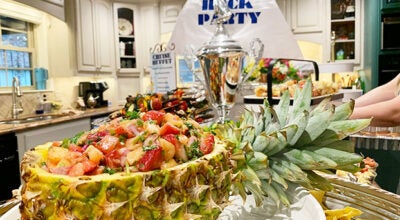JODY HOLTON — Controlling blood sugar levels with Type 2 diabetes
Published 12:30 am Sunday, March 20, 2022
|
Getting your Trinity Audio player ready...
|
There are about 27 million people in the U.S. with Type 2 Diabetes. Another 86 million have prediabetes: Meaning their blood glucose is not normal, but not high enough to be diabetes yet.
Some people are prone to it by genetics and some by poor food and drink choices.
For the majority of healthy individuals, normal blood sugar levels are as follows: Between 4.0 to 6.0 mmol/L (72 to 108 mg/dL) when fasting. Up to 7.8 mmol/L (140 mg/dL) 2 hours after eating.
Diabetes is when your blood sugar or glucose levels are higher than normal. The goal is to bring down those sugar levels. Its high carbohydrate foods like breads, cereals, rice, pasta, fruits, milk, alcohol and desserts that can cause this rise.
Your eating plan should focus on the amount and type of carbs you put on your plate throughout the day, not all carbs are bad. You should include these items:
- Raw, Cooked, or Roasted Vegetables, these add color, flavor, and texture to a meal. Choose tasty, low-carb veggies, like mushrooms, onions, eggplant, tomatoes, Brussels sprouts, and low-carb squashes, like zucchini.
- Leafy Greens, try kale, spinach, and chard. Roast kale leaves in the oven with olive oil for quick, crunchy chips. You can also mix greens in with roasted veggies to add texture and a different flavor, or serve them with a little protein, like salmon.
- Flavorful, Low-calorie Drinks, plain water is always good, but water infused with fruits and vegetables is more interesting. Cut up a lemon or cucumber and put it in your water, or make ice cubes with some flavoring in them. If you’re not a hot tea drinker, try cold tea with lemon or a cinnamon stick.
- Melon or Berries, did you know that 1 cup of either of these has just 15 grams of carbs? For a different twist, mix the melon or berries with plain yogurt, or put them in ice cubes.
- Whole-grain, Higher-fiber Foods. Fill up on these to keep from overeating or choosing the wrong foods. Try legumes like dried beans, peas, and lentils. You can even enjoy a black bean and corn salsa with your raw vegetables. Oatmeal with fresh blueberries is a double plus!
- A Little Fat. Good fat choices include olive oil, avocado, and fatty fishes — think salmon served on of a bed of greens.
- Protein, Greek yogurt, cottage cheese, eggs, and lean meats. And don’t forget treats. You can also snack on a lower-fat cheese stick or a beef jerky stick — but keep an eye on how much sodium is in them.
If you have diabetes, drinking alcohol may cause your blood sugar to either rise or fall. Plus, alcohol has a lot of empty calories. Meaning, no nutritional value. If you drink, do it occasionally and only when your diabetes and blood sugar levels are well-controlled.
If you are following a calorie-controlled meal plan, one drink of alcohol should be counted as two fat exchanges.
Exercise in Spurts. It’s important to get at least 30 minutes of exercise a day to help manage your diabetes. Too busy? Break it up into three shorter sessions. Try 10 minutes of strength training in the morning. Play an active game with the family during the day, or take a brisk stroll at lunchtime.
Then, walk your dog in the evening. This combo can help improve your blood sugar control and make heart disease less likely.
If you are on medication and the medication doesn’t seem to be working, there are variables. Maybe dosage needs adjusting. Perhaps another drug needs to be considered. Home testing kits help you monitor levels and regular visits with your doctor are a must.
Don’t give up. Stay diligent, ask questions and research information. It’s your body and you are 100% responsible for taking good care of it. Stay healthy, my friends.
Jody Holton writes about health for Port Arthur Newsmedia. She can be reached at jholton3@gt.rr.com.






